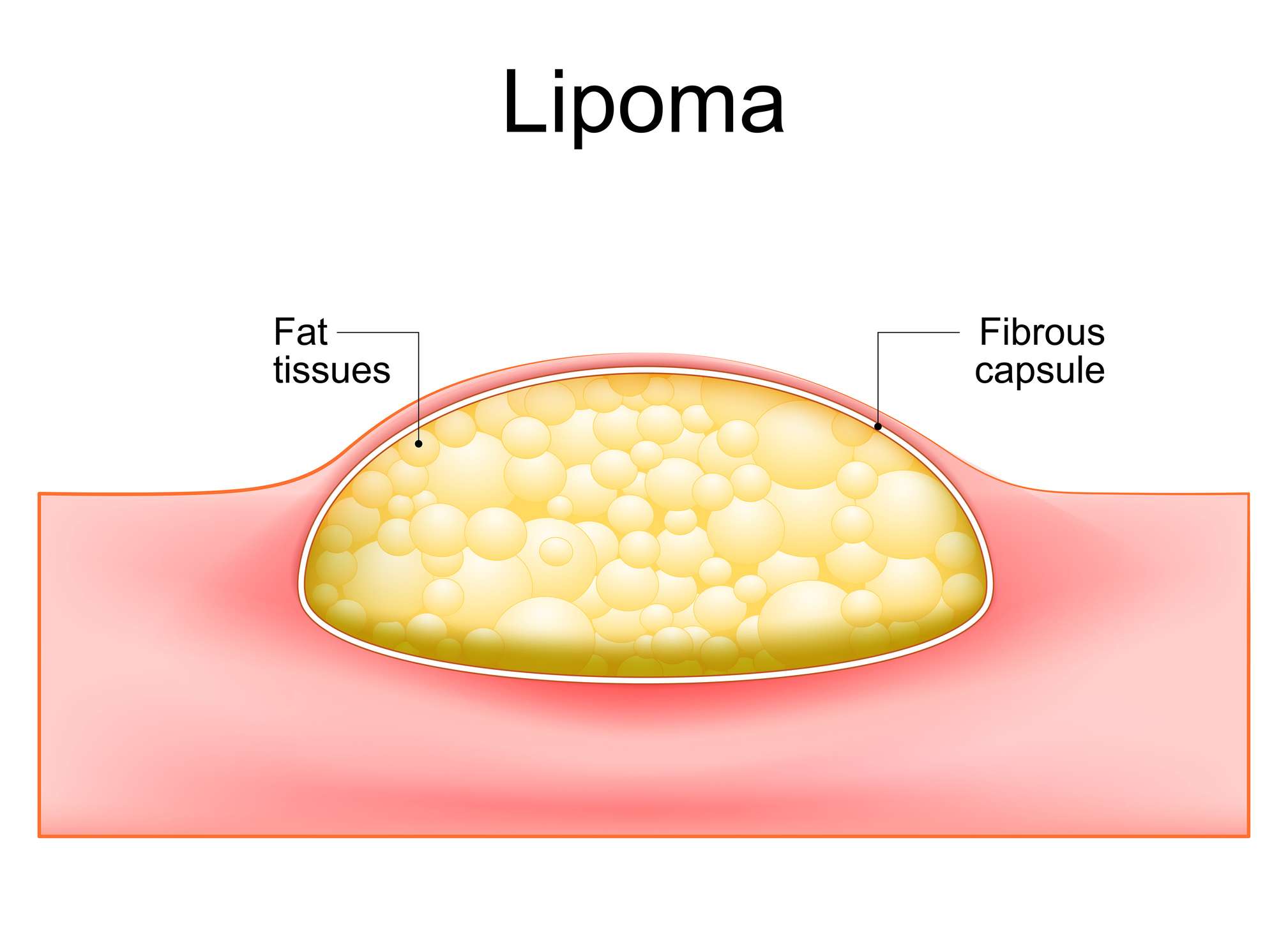Fibroma:
The formation of new connective tissue (fibroma) involves certain groups of connective tissue cells called fibrocytes. In this context, fibromas are small, benign tumors. Malignant connective tissue tumors are also called fibrosarcomas. Fibromas are divided into different forms:
A) Soft fibroma:
Soft fibroma is also known as fibroma molle or fibroma pendulans. The skin-colored, small (a few millimeters in size) skin protrusions that develop are equally common in both women and men. Soft fibromas often first appear at puberty. They can either rest on the skin with a broad base or be pedunculated (narrow base and broader "head"). Because of their pedunculated appearance, soft fibromas are also called pedunculated warts. Common areas of the body include the neck, armpits, and groin. Soft fibromas can occur singly or in groups.
B) Hard fibroma:
Hard fibroma, also called histiocytoma or dermatofibroma, occurs in most adults, with the most common location being on the legs (followed by the arms and trunk). Hard fibromas, unlike soft fibromas, are firmer nodules a few millimeters in size. In rare cases, a hard fibroma can grow up to one centimeter and become visible as a dark or light brown spot in the skin.
C) Irritant fibroma:
An irritation fibroma or irritation fibroma forms smooth, small nodules on the oral mucosa. This expression can occur with persistent irritation of certain areas in the mouth.
D) Other fibromas:
Other rare connective tissue cell tumors include:
Ossifying fibroma: benign tumor on the facial skull or mandibular bone, respectively.
Non-ossifying fibroma: connective tissue change of the bone occurring in children.
Chondromyxoid fibroma: Tumor in long bones occurring primarily in adolescents.
Desmoplastic fibroma: A rapidly growing bone tumor occurring primarily in young people.
Angiofibroma: Tumor in nasopharynx with vessels occurring primarily in adolescent males.
Atheroma:
An atheroma, colloquially known as a gruel pouch, is a cavity in the subcutaneous tissue filled with skin cells and fat. Atheromas can form due to clogged sebaceous glands and are benign horny cysts of the skin. Atheromas often develop at the hair root, which is why body parts with a lot of hair are increasingly affected by atheromas (90% on the scalp). Non-inflamed atheromas can reach a size of one to two centimeters. In case of inflammation, they can grow up to the size of a chicken egg (rarely larger).
Epidermoid cysts and trichilemmal cysts
Atheromas can be divided into epidermoid cysts and trichilemmal cysts. Epidermal cysts are non-painful, bulging elastic nodules of the skin. They have an excretory duct connected to the skin surface and grow slowly. Most often they occur on the face or back. If an epidermal cyst becomes inflamed or infected, surgical removal is often necessary. Trichilemmal cysts, unlike epidermal cysts, do not have a central excretory duct. Their contents are firm, hard, odorless, and they almost always occur in groups. If the trichilemmal cyst bothers affected persons visually or it causes discomfort, surgical removal is recommended.
Rarely occurring malignant soft tissue tumors are called soft tissue sarcomas or malignant soft tissue tumors.




